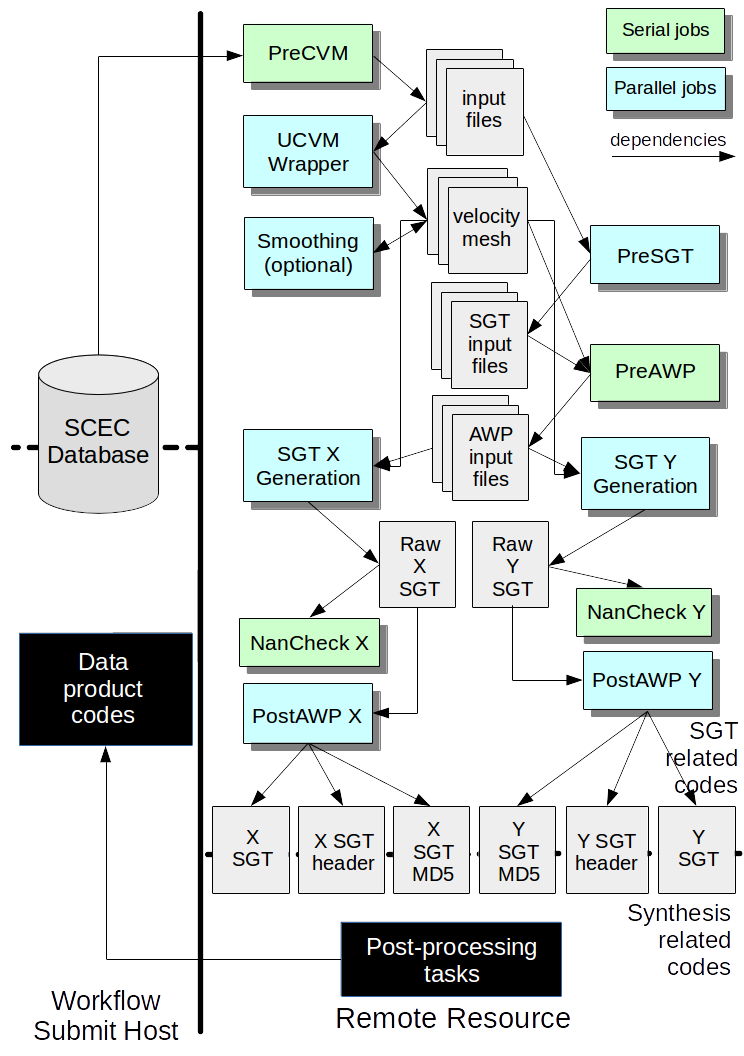Difference between revisions of "CyberShake Code Base"
From SCECpedia
Jump to navigationJump to search (Created page with "This page details all the pieces of code which make up the CyberShake code base, as of November 2017. Note that this does not include the workflow middleware, or the workflow...") |
|||
| Line 1: | Line 1: | ||
This page details all the pieces of code which make up the CyberShake code base, as of November 2017. Note that this does not include the workflow middleware, or the workflow generators; that code is detailed at [[CyberShake Workflow Framework]]. | This page details all the pieces of code which make up the CyberShake code base, as of November 2017. Note that this does not include the workflow middleware, or the workflow generators; that code is detailed at [[CyberShake Workflow Framework]]. | ||
| + | |||
| + | Conceptually, we can divide up the CyberShake codes into three categories: | ||
| + | |||
| + | #Strain Green Tensor-related codes: These codes produce the input files needed to generate SGTs, actually calculate the SGTs, and do some reformatting and sanity checks on the results. | ||
| + | #Synthesis-related codes: These codes take the SGTs and perform seismogram synthesis and intensity measure calculations. | ||
| + | #Data product codes: These codes insert the results into the database, and use the database to generate a variety of output data products. | ||
| + | |||
| + | Below is a description of each piece of software we use, organized by these categories. | ||
| + | |||
| + | == SGT-related codes == | ||
| + | |||
| + | |||
| + | [[File:SGT_workflow_stages.png]] | ||
Revision as of 20:31, 18 October 2017
This page details all the pieces of code which make up the CyberShake code base, as of November 2017. Note that this does not include the workflow middleware, or the workflow generators; that code is detailed at CyberShake Workflow Framework.
Conceptually, we can divide up the CyberShake codes into three categories:
- Strain Green Tensor-related codes: These codes produce the input files needed to generate SGTs, actually calculate the SGTs, and do some reformatting and sanity checks on the results.
- Synthesis-related codes: These codes take the SGTs and perform seismogram synthesis and intensity measure calculations.
- Data product codes: These codes insert the results into the database, and use the database to generate a variety of output data products.
Below is a description of each piece of software we use, organized by these categories.
